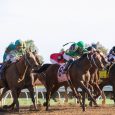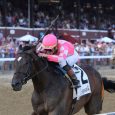The Saratoga racing meet opens on Thursday, July 15, for a 40-day run through Labor Day, Sept. 6. Our usracing.com contributor Noel Michaels looks at some of the track trends that can help make your days at the Spa a profitable.
SARATOGA 2021
Tips And Trends For A Profitable Summer at Saratoga
By Noel Michaels
If you are a serious horseplayer and you’re not already looking forward to the Saratoga meet, it might be time to check your pulse. A trip to the Spa is the summer place to be for handicappers and horse racing aficionados alike.
The highly anticipated 40-day Saratoga opens Thursday (July 15), runs five days a week (Wednesday-Sunday) and closes out on Labor Day (Sept. 6).
The schedule calls for 76 stakes races worth $21.5 million in purses. Of course, Travers Day on Aug. 28 is the highlight of the meet – a day that includes six Grade 1’s and seven graded stakes overall.
Saratoga, however, is not only about the Travers and the boatload of other stakes on the card. The daily is incredible, too. Here are some tips and trends to look for that will give you an edge at the Spa.
Speed rules in dirt sprints
In terms of a winning track profile at Saratoga, the first thing to know is that the main track is speed favoring at all dirt sprint distances.
The speed bias is especially prevalent in races at 6 furlongs and shorter, particularly with 2-year-olds. Early speed horses on or within a length of the lead at the first call win nearly 50% of all dirt sprints shorter than 6 furlongs. Speedsters and pressers also do very well at the commonly run distance of 6 furlongs. Speed is very handy at 6 ½ furlongs and 7 furlongs, but not as noteworthy as in the shorter sprints.
Know your one-turn races from your two-turn races
So many form reversals happen at Saratoga, and it always adds to the intrigue of the meet for handicappers. An understanding of the ins-and-outs of it could stand to make you a lot of money. Most of the horses coming to race at Saratoga are shipped up from Belmont Park. With the move to Saratoga, the focus flip-flops in dirt routes from benefiting one-turn route specialists at Belmont to favoring route horses that do their best running around two turns – and at 1 1/8 miles – as opposed to 1 mile or 1 1/16 miles.
Look down the past performances and bet horses whose best route races came on more traditional two-turn layouts such as Aqueduct, Gulfstream, Churchill, Keeneland, the mid-Atlantic region, or in past races at Saratoga – but not horses that run best at Belmont.
Also look to bet against horses that need 1 mile or 1 1/16 miles to do their best running. Believe it or not that is a giant swath of horses. At Saratoga, they will be shoe-horned into either 7-furlong races or 1 1/8-mile races by their connections who want to run them at Saratoga, often with losing results.
Stay away from inside posts at 5 /2 furlongs
In Saratoga’s turf sprints, which are all run at 5 ½ furlongs, downgrade the three inside posts, particularly the rail, while upgrading horses drawing outside posts in large fields with more than eight runners. Saratoga has been running turf sprints for nearly two decades and the inside posts have always under-performed, particularly in big fields. All running styles seem to have a good chance to win Saratoga’s turf sprints, so post position is more important to focus on than whether you bet a speed horse, a presser, a stalker, or even a closer.
Pass on betting the rail horse in Saratoga turf sprints and your win percentage will rise. Then turn it into a big positive betting angle by taking note of horses that drew the rail and lost Saratoga turf sprints and bet them back next time if they get off the inside. Something like post position seems like such a trivial handicapping tool, but in these wide-open Saratoga turf sprints, any way you can narrow down the field is a big help.
Stay inside on inner turf routes
In turf routes, outside posts are negative factors at Saratoga to varying degrees. Posts 8 and outward are slight disadvantages on the turf at most distances, while far outside posts 10 and outward are usually poor bets. The inside three posts can offer a good advantage to horses running on the inner turf course at the distances of 1 mile and 1 1/16 miles.
Pace profile for outer turf course
Finally, in terms of preferred turf route running styles, speed generally plays a little better on the Mellon (outer) course than on the inner turf course. The pace profile of the average turf winner at Saratoga is a horse that is roughly about four lengths off the pace at the first call and 2 1/2 lengths off the pace at the second call. Hold more strictly to this pace preference on the Mellon course, where deeper-closing winners happen less frequently than on the inner. If you can get to the paddock for inner course turf races, look for physically small, athletic-looking horses instead of large, long-striding horses. The little guys handle the tight inner course turns nicely, while the big bulky horses generally don’t.
Spa always a good spot for savvy handicappers
Saratoga is the ideal meet for handicappers who follow track trends, because so many novice handicappers and tourists will be pumping so much money into the betting pools. Opportunities always abound for serious horseplayers to win more than their share over the course of the summer meet. I hope you can benefit from this Spa handicapping primer and use the information to your advantage. Have a great season, and good luck!




